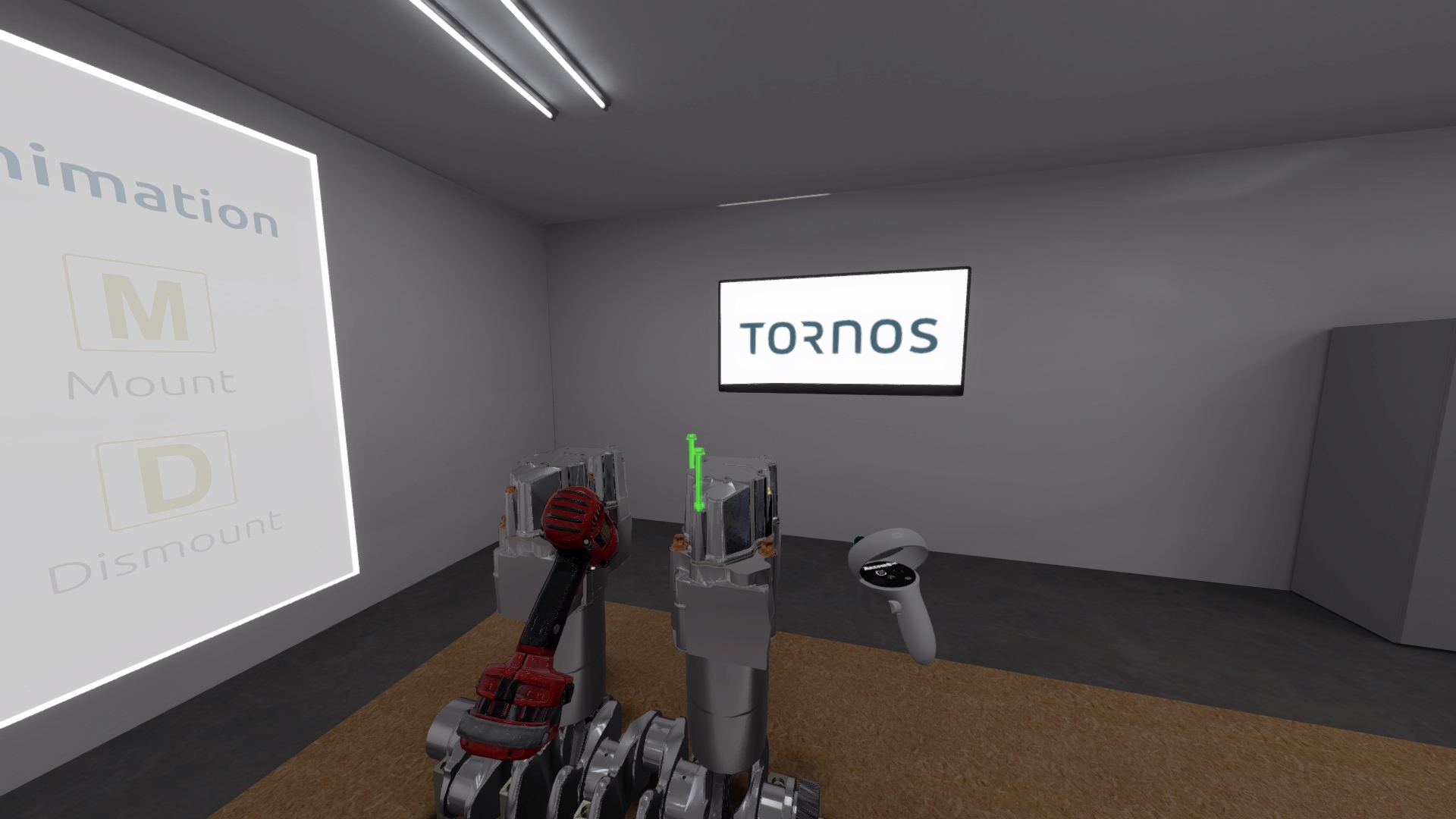"Learning VR" app convertion
Professional projects | | Links:

Overview
Type : Professional
Technology : Unity, Oculus Quest, HTC Vive
Platforms : Android, Oculus Quest
The objective of this project was to adapt an E-Learning application originally designed for the HTC Vive to make it compatible with the Oculus Quest 2. This adaptation aimed to enhance portability and showcase the potential of VR in E-learning scenarios.
The initial application, developed for Tornos, serves as a tool for users to familiarize themselves with VR technology and learn the assembly and disassembly of a motor. Disassembling the motor involves using a drill to remove screws holding its parts together. The motor consists of approximately ten parts that must be dismantled in a specific sequence.
This application encompasses multiple functionalities: users can select between assembling or disassembling the motor, view animations illustrating the motor’s assembly and disassembly, and choose difficulty levels affecting the displayed guidance. Parts change color to indicate their correct or incorrect positioning.
Furthermore, users have the capability to record their gameplay sessions, creating clips capturing all movements within the scene. These recorded clips can be played back or downloaded, allowing analysis for educational purposes.
The initial application was developed for the HTC Vive using VRTK, an outdated plugin lacking current support. Hence, I opted to utilize the VR Interaction Framework plugin for the conversion process. This new plugin provided a functional XR rig for Oculus Quest and facilitated the reintegration of interactions with the drill and motor components.
The most challenging aspect of the conversion process involved understanding the project’s functionality initially. Several missing scripts hindered the smooth functioning of the project, necessitating an understanding of its operation without the ability to run the application. Subsequently, we had to transpose VRTK components into VRIF components and adapt the application to suit Oculus Quest, considering differences in controllers and the Android-based Quest platform.
Ultimately, the adapted application performed better than its older version due to smoother interactions. The complete behavior of the initial application was successfully ported to the new version.